The legacy of Fannie Lou Hamer’s life was her belief that the United States could indeed live up to its ideals.
-
September 2022
Volume67Issue4
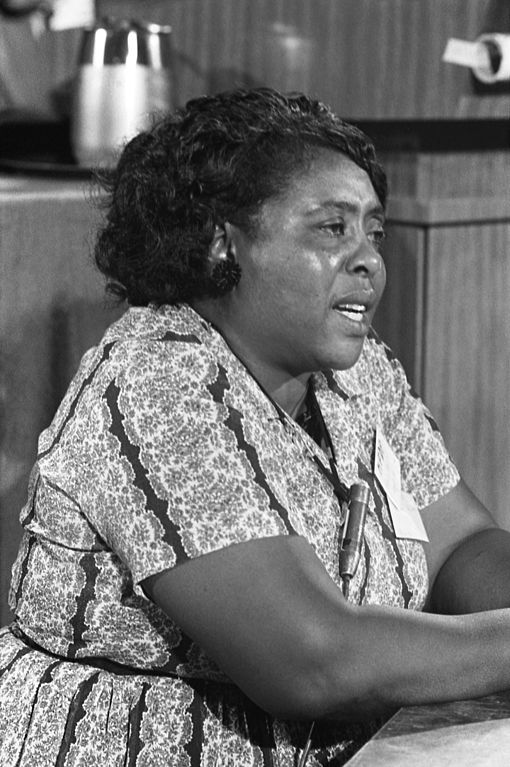
Editor’s Note: Keisha N. Blain is a professor of Africana Studies and History at Brown University and a 2022 Guggenheim Fellow. The following is an excerpt of the introduction to her latest book, Until I Am Free: Fannie Lou Hamer's Enduring Message to America, which chronicles the life and legacy of the civil rights leader.
Mainstream historical narratives on Black social movements privilege the ideas and political activities of men. Most Americans connect the civil rights movement and Black Power era with Black men such as Martin Luther King Jr., John Lewis, and Malcolm X, to mention a few. And when Black women leaders enter the conversation, the focus tends to be on the same prominent figures, such as Rosa Parks, Coretta Scott King, and Angela Davis.
Needless to say, these trailblazing leaders all fundamentally shaped American society; their work and lives should be deeply studied. However, the historical record is far richer and more interesting than many realize, including a diverse array of activists and leaders from different classes and all walks of life.
Fannie Lou Hamer’s story captures the contributions of a Black woman sharecropper with limited formal education and material resources—but an all-consuming passion for social justice. Born in Mississippi on October 6, 1917, Hamer was the youngest of twenty children. The granddaughter of enslaved people, Hamer worked as a sharecropper for much of her life—a brutal form of labor that closely mirrored the rhythms of slavery in the United States. From sunup to sundown, Hamer and her family cultivated cotton on a local plantation, expanding the fortunes of the white landowners as the Hamer family sank deeper and deeper into debt. At the tender age of twelve, she concluded her studies at a local schoolhouse so she could help her family meet their growing financial needs.
The difficulties of Hamer’s childhood extended well into adulthood, when she struggled to make ends meet. Despite her limited material resources and the various challenges she endured as a Black woman living in poverty in Mississippi, Hamer committed herself to making a difference in the lives of others.
Her life changed dramatically in 1962. At age 44, she attended a mass meeting at a church in Sunflower County, Mississippi, organized by activists in the Student Nonviolent Coordinating Committee (SNCC), an interracial civil rights organization. The meeting started her on the path to becoming a voting rights activist. Deeply moved by the words of the young SNCC activists that evening, Hamer learned of her constitutional rights as a citizen of the United State; she later said it was the first time she learned she had the right to vote. That year, Hamer became a field secretary for SNCC and worked to assist Black residents in Mississippi with voter registration.
When she joined the civil rights movement in 1962, Hamer decided to dedicate her time and talents to the betterment of Black people and other marginalized groups. In the years to follow, she launched a number of initiatives aimed at expanding voting rights, as well as addressing racism and inequality in her community and across the nation. Working alongside SNCC activists, Hamer spearheaded voter education workshops in the South, facilitated voter-registration drives, and participated in marches and sit-ins throughout the region. Her efforts to expand voting rights in the South drew the ire of many, especially local white supremacists who attempted to impede her political work at every turn.
From the moment she joined the civil rights movement, Hamer became a target of violence, harassment, and intimidation. By extension, her loved ones also became the targets of local law enforcement. In one instance, Hamer’s husband, Perry (“Pap”), was arrested and jailed. Local police also targeted one of Hamer’s daughters, who was arrested in 1963. Hamer was harassed for a water bill in the amount of $9000, even though the Hamers had no running water. And on one occasion, local police officers barged into her home—all the way to her and Pap’s bedroom—in the wee hours of the morning, waving guns and flashlights, with a litany of questions about her personal affairs.
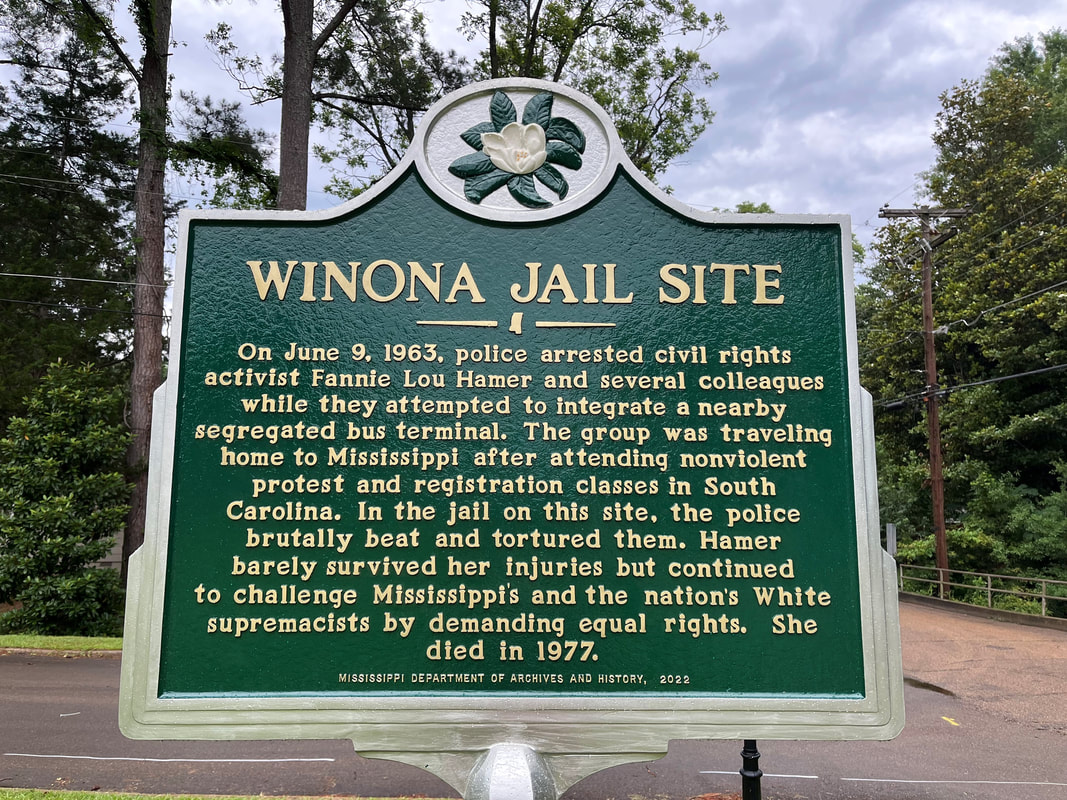
Hamer endured a brutal beating in Winona, Mississippi, in 1963. In June of that year, she was traveling back home with fellow activists after attending a voters’ workshop in South Carolina. They decided to stop in Winona to grab a bite to eat. What was supposed to be a quick rest stop became one of the most harrowing experiences of her life. The owners of the restaurant refused to serve Black patrons. Then, from the bus, Hamer noticed police officers shoving her friends into their patrol cars. Within minutes of exiting the bus, Hamer was grabbed by an officer, who began viciously kicking her. Later at the police station, officers, assisted by prisoners, unleashed a terrible beating with blackjacks on Hamer, which left her with permanent scars and kidney damage.
Despite such traumatic experiences, Hamer refused to be thrown off her mission. As activist Dorothy Height, president of the National Council of Negro Women (NCNW), once remarked, Hamer “turned all of her own suffering into freedom and justice for her people.”
In the aftermath of the 1963 Winona beating, Hamer amplified her political work, determined to transform American society through an expansion of Black voting rights. She not only helped to register voters, but empowered others by running for office. In 1964, one year after she successfully registered to vote for the first time, Hamer ran for a seat in the US House of Representatives, challenging white Mississippi Democrat Jamie Whitten, who was seeking a thirteenth term. Although her chances of winning were slim, she explained to a reporter, “I’m showing people that a Negro can run for office.”
With a limited budget, Hamer ran a spirited campaign backed by a coalition of civil rights organizations, and promised to tackle poverty and hunger. Unsuccessful in her first bid for Congress, Hamer went on to run for office twice more—ever committed to the principle that electoral politics and public service could help overturn decades of unjust laws and policies in the United States.
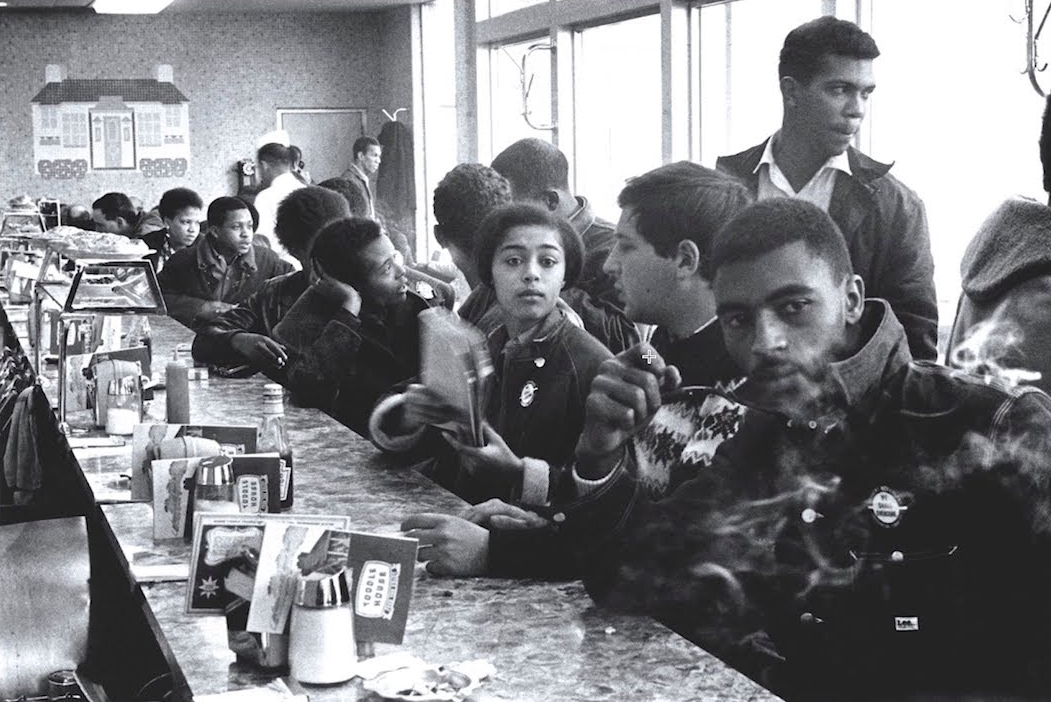
Hamer’s passion and candidness forced those around her to look deep within themselves—to acknowledge their failings and often their own prejudices. She was unafraid to publicly condemn those who perpetuated injustice and she did not shy away from demanding more from public officials. She even challenged civil rights leaders and allies in the struggle, pointing out their inconsistencies and the moments when they were too complacent. Responding to those who insisted on gradualism—waiting for the “right” moment to secure Black rights and liberation—Hamer looked to history as her guide. “For three hundred years,” she explained, “we’ve given them (white people) time. And I’ve been tired for so long,” she continued, “ that now I am sick and tired of being sick and tired. We want a change in this society in America.”
Hamer’s boldness and radical honesty were on full display in August 1964, when she spoke before a televised audience at the Democratic National Convention in Atlantic City, New Jersey. She had traveled all the way from Mississippi on behalf of the Mississippi Freedom Democratic Party (MFDP)—an organization she helped establish in April 1964 to challenge the all-white Mississippi delegation.
In her speech, delivered before millions on TV, Hamer described the persistent acts of racist violence Black people faced on a daily basis in the Jim Crow South. She told stories of shots being fired at the homes of those who supported her stance on voting. And she shared her own experiences with state-sanctioned violence, recounting the details of the severe beating she was subjected to in that Winona jail cell in 1963. As she reflected on her own painful experiences and the experiences of other Black people in the South, Hamer could not help but to “question America.”
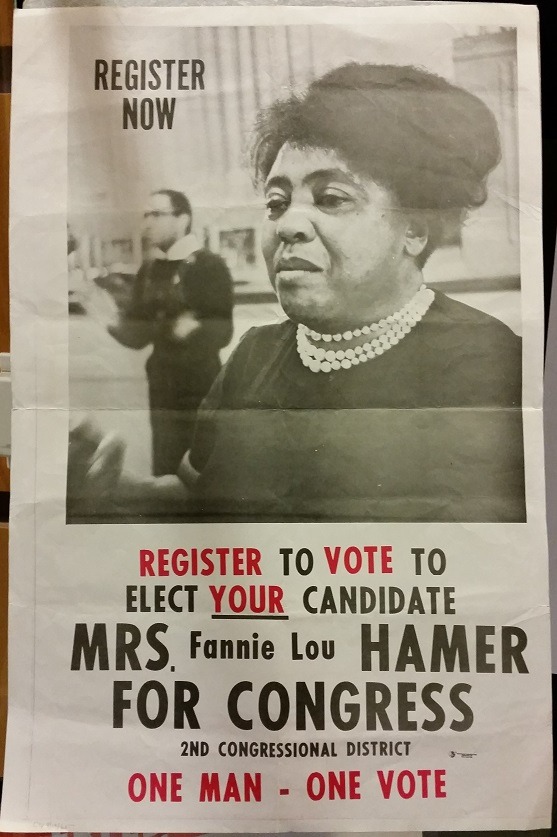
“Is this America,” she asked as tears welled up in her eyes, “the land of the free and the home of the brave, where we have to sleep with our telephones off of the hooks because our lives are threatened daily, because we want to live as decent human beings, in America?” These words shook the nation to its core. If Americans claimed to be committed to the ideals of “liberty and justice for all,” then Hamer’s testimony laid bare the full extent of American hypocrisy.
Those who saw the speech, either in person or on television, were transformed by its power. Although it made Hamer an instant celebrity, it was but one of the many moving and dynamic speeches she delivered during the 1960s and ’70s. Those who worked alongside her on a daily basis and those who lived in her community witnessed the full extent of Hamer’s work, extending far beyond that one famous speech. Indeed, Hamer set out to touch the lives of everyone she encountered, never turning away a person in need, regardless of their race. Love for others guided her political activism and provided the impetus for her decision to undertake several initiatives. As she once explained, “Freedom is in my soul and love is in my heart.”
During the late 1960s, she launched the Freedom Farm Cooperative, a community-based rural project, to tackle poverty in Mississippi and to advance economic empowerment. As someone whose life had been deeply affected by hunger and poverty, Hamer envisioned Freedom Farm as a response to the hunger and poverty that was rampant in Sunflower County.
Her advocacy included valuable contributions to the women’s rights movement. A victim of sexual and medical abuse, Hamer turned her pain into political action, becoming the first civil rights activist to publicly speak out against forced sterilizations. Although she did not identify as a feminist, Hamer firmly believed in women’s empowerment and argued for women’s representation in electoral politics. In 1971, she joined forces with a diverse group of women, including feminist leader Gloria Steinem and US congresswoman Shirley Chisholm, to establish the National Women’s Political Caucus (NWPC), with whom she worked to expand women’s political participation at the local, state, and national levels.
From the moment she joined the civil rights movement at age 44 to her death 15 years later, Hamer accomplished more than most people manage to in a lifetime—and she did so with few material resources. Despite her humble beginnings and limited formal education, Hamer refused to be sidelined in the movement and refused to be intimidated by those of higher social status with better jobs and education. She knew that her leadership and intellectual contributions were valuable, and she lived with a clear sense of purpose—to make a better life for herself and others. Yet her life experiences grounded her in reality. She never imagined a better future without a clear plan of action. And she maintained hope that America could one day live up to its promise and its ideals.
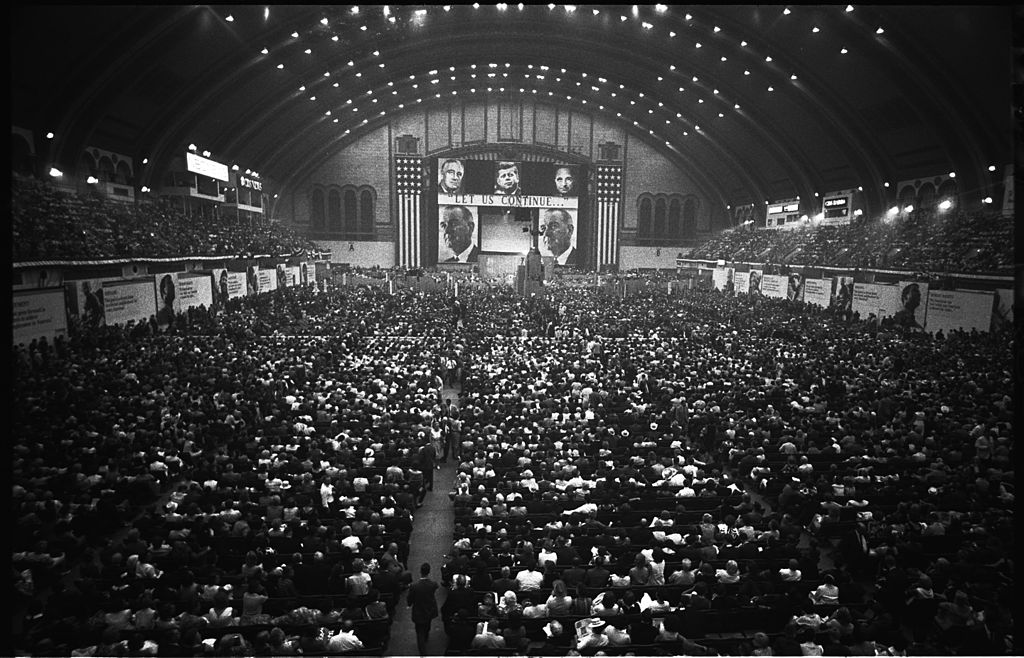
While there is much to celebrate in the achievements we have had as a nation—including the dismantling of Jim Crow and the expansion of Black voting rights—many of the roadblocks Hamer encountered continue to shape the lives of Black people in the United States today. Economic inequality remains a challenge in Hamer’s hometown of Ruleville, Mississippi, with more than 40 percent of the population living below the poverty line, the majority of whom are Black and Latinx residents. And, despite the expansion of voting rights in the state, no African American candidate has been elected to statewide office since 1890. Hamer’s fight lives on today as Black people in the United States continue to face many of the same inequities she fought so vigorously to overcome.
The societal problems that hampered Black life were concerns that all Americans had to face—whether they wanted to confront those issues or not. In Hamer’s framing of the matter, no one could truly experience freedom if others in that society were oppressed. She emphasized this message on a number of occasions, underscoring the danger of being complicit in the face of injustice. “Until I am free,” she boldly told the mostly white audience members at the University of Wisconsin in 1971, “you are not, either.” She stressed how the fate of Black people in the United States was—and still is—connected to that of all Americans, regardless of race, class, or location. America’s mistreatment of and disregard for Black people in Mississippi, Hamer argued, signaled the nation’s failure to live up to its promises.
In so many ways, Hamer’s words are timeless. They speak to the current moment and offer hope and guidance for those of us who are committed to social justice today, as they did for freedom fighters during the 1960s and ’70s.

